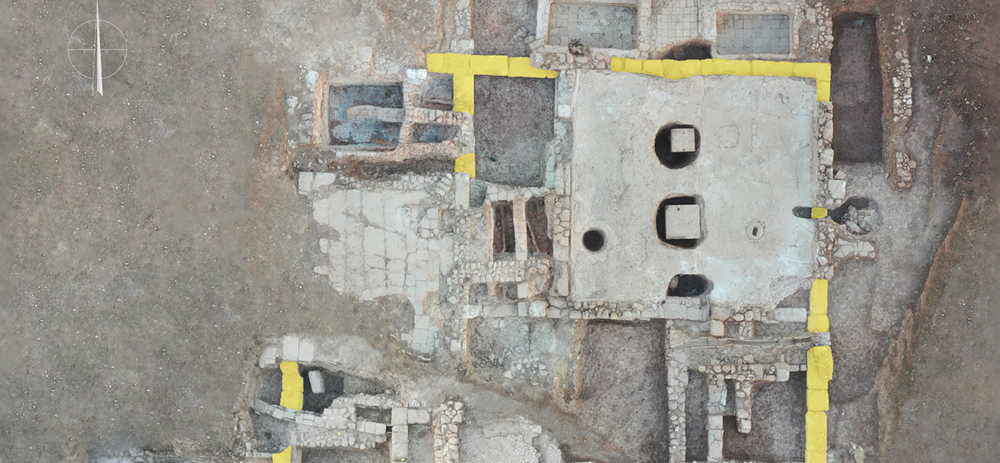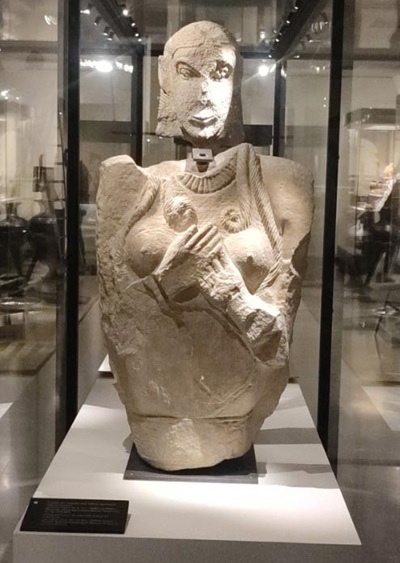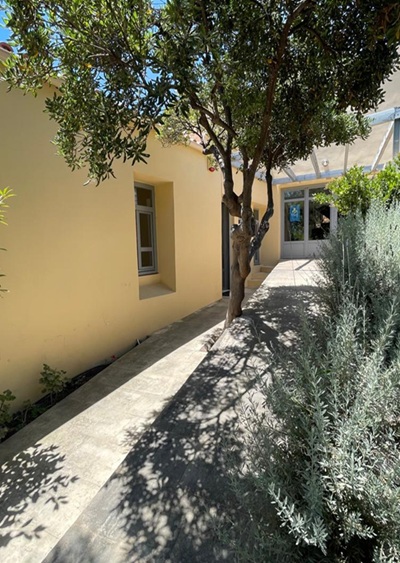
In October 2023, the systematic archaeological research in Chiliomodi, Corinthia, was completed within the framework of the research project “Ancient Teneas”, under the direction of the archaeologist Dr. Elena Korka and implemented by the Directorate of Prehistoric and Classical Antiquities of the Ministry of Culture.
The excavation, among other things, revealed for the first time this year, part of the Hadrianic aqueduct in the area of ancient Tenea, determining precisely the course of one of the largest hydraulic works of the 2nd century AD in Greece, which was intended to supply water to Ancient Corinth from Stymphalia. At the same time, a part of the prehistoric settlement of Tenea was found and excavated, dating back to the Early Bronze Age II (2,600 – 2,300 BC), confirming that the area was inhabited before the fall of Troy. In addition, a rich building complex of the late Archaic period until the Hellenistic period was uncovered, with individual places of worship, including three extremely elaborate cisterns, one of them with a cathode-anode scale.
Of exceptional archaeological importance and rarity is the treasure of 29 silver ancient Greek coins that was found along with a portable clay altar, a miniature vase and a figurine of a horse with a rider. The hoard includes coins dating from the late 6th century BC to the 330s BC, many of them from the rarest and most historic coins of ancient Greece, such as three Ilidos staters minted in Olympia during different Olympic Games, a stater of Aegina with a land turtle instead of a sea turtle, staters of Stymphalos, Argos and Opuntia of Locres, and a 5th century BC Thebes stater depicting Hercules drowning two snakes with his hands. The presence of this treasure is linked to the findings of cultic use (female and animal figurines, miniature vases and others) that were found last year and continued to be found this year, giving a clear ritual character to the sites uncovered.
Two building complexes of the Roman and late Roman periods were excavated in upper excavation layers. One of 160 m², which is a continuation of the 281 m² of 2022, with individual laboratory facilities and storage areas. The second building complex of an excavated area of 300 m² with individual rooms around a raised covered forecourt – corridor, so far 14.5 m long and 3 m wide, covered with clay slabs. Finally, in the cemetery zone and next to the Roman burial monument II of 2022, Roman pit tombs and a cluster of richly-effigied Archaic tombs were excavated.

The programme of Ancient Tenea, under the direction of Dr. E. Korka, is carried out by the archaeologist in charge of the excavations, Mrs. P. Evangelloglou, archaeologist of the Ephorate of Antiquities of Corinth and the archaeologists and holders of postgraduate diplomas P. Vlachou, M. Ioannou, Ε.Kapouralou, A.Kiki, P.Kostopoulou, P.Lampiri, P.Panailidi, Ch. Terzoudis, I. Christidis, the architect Dr. D. Bartzis, the topographer A. Kontoudakis and students from Greek and foreign universities.
The project is further supported by an interdisciplinary team of numismatists led by Dr. K. Lagos and M. Syrrou, anthropologists led by Professor Emeritus of the Democritus University of Thrace Ms. Papageorgopoulou, topographers under the supervision of Mr. Georgopoulos, professor emeritus of photogrammetry at the School of Surveying and Topographical Engineering of the NTUA.In the context of the above mentioned collaborations, modern methods of photogrammetric imaging, 3D imaging of spaces, objects and anthropological material were applied.
Responsible for the conservation of the finds is the conservator of works of art and antiquities Mrs. F. Koussiaki in collaboration with the conservation student Th. Papageorgiou. The editing and processing of the educational programs and creative writing workshops has Dr. M. Hapsa philologist and writer who serves at the 4th High School of Corinth, while the guided tours and educational activities were implemented by archaeologists P. Labiri and A. Kratsi.







Leave A Comment